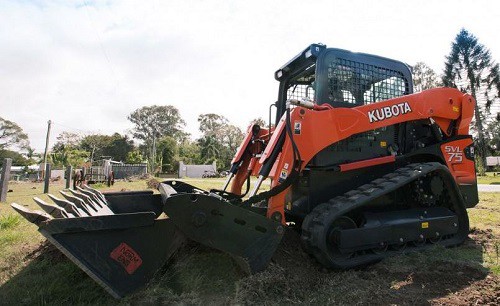
A track loader is one of the most useful and versatile tools for construction projects, with increased capacity compared to skid steer loaders and improved capability over soft terrain. However, they require special care to prevent downtime and ensure reliable service.
Like practically any modern motorised equipment, if you want it to perform optimally at all times, you need to maintain your track loader properly. A well-maintained machine will save you thousands in repairs and replacements. Here is a short guide with hints and tips on keeping your track loader in top shape.
Undercarriage
The undercarriage should be cleaned on a regular basis, ideally daily. When you’re working in an environment full of abrasive materials like clay and gravel, the undercarriage should be cleaned several times a day. Abrasive materials can damage key components of the undercarriage.
Tracks
You should check and adjust your track tension on a regular basis. If the track is too tight, the undercarriage will wear prematurely. If it’s too loose, you’ll get a ratcheting effect where the track drive lugs will jump over the sprocket rollers, also resulting in premature wear of the undercarriage.
Don’t allow the sidewall of the tracks to rub against hard surfaces while in operation. This also leads to premature wear and can result in track failure. Fluids like oil and grease should be removed from the tracks immediately, as they’re bad for the rubber.
Idlers and rollers, while sealed and lubricated permanently, will eventually wear out. These, along with sprockets and tracks should be checked regularly and replaced when they show signs of excessive wear. To get the best quality service for the lowest price, any repairs and replacements should be conducted at an accredited centre.
Chassis
Track loaders are uniquely qualified to operate in harsh soil conditions, so it’s important to check the chassis to ensure all covers, doors, belly pans and shields are in good condition and securely fastened. The chassis should be kept clear of debris and cleaned every day in most cases. Cleaning the chassis prevents catastrophic failures due to the accumulation of foreign materials or overheating from plugged radiators.
Track Motors and Final Drives
Regularly check the oil on the planetary side of the final drive. Check the oil levels in your final drive or track motor every 100 hours of operation, changing the oil out at least once a year. Drain water and sediment from the fuel tank and filter every 50 hours.
You should also check the case drain filter every 500 hours and replace it when you install a rebuilt or new drive. If the case drain filter gets clogged, it causes an extreme build-up of pressure in the final drive, resulting in expensive damage.
Other General Maintenance
In addition to the above, here are some other general maintenance tips. You should always check with your equipment manual above anything and follow their recommended schedule. Alternatively, you can contact an expert with your brand of equipment.
At the start of every day:
- Check the engine oil and hydraulic fluid levels
- Make sure the cooling system has enough coolant and the radiator is clean
- Check hydraulic hoses and lines for damage or leaks
- Check for any loose nuts and bolts in the undercarriage.
- Check the battery, cables, connections and electrolyte level
Maintenance can be time-consuming but it is worth it to keep your track loader running smoothly and to prevent unnecessary downtime and repair costs.
Talk to Allclass Constructions
If you need construction machinery in Brisbane, get in touch with the team at Allclass Construction Equipment. We are a 5-star service centre for Kubota machines, and we offer a range of high quality new and used construction machinery.
For new or used construction equipment, call us on 1300 255 252 or contact us online.